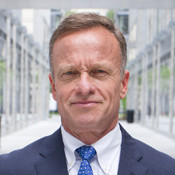At Centura Health’s St. Anthony North hospital in Westminster, Colorado, celebration is in the air.
“It’s amazing,” said Jose Diaz, Jr, the son of a patient about to be released after more than thirty days. “I’m glad he got better. I’m glad he gets to go to rehab. Soon he’ll be able to go home.”
The medical provider’s 500th patient to recover from COVID-19 was wheeled out of the facility recently to a waiting ambulance.
“Days like this are why we do what we do,” said Tanya Bozic, a nurse at St. Anthony North. ElijahTo be able to see somebody else and know they’re going to have another day with their family.”
Jose Diaz, 42, arrived with shortness of breath and typical COVID-19 signs of fatigue and fever. His nurses said Diaz was a fighter, but he had help and not just from them. He was the first patient at the hospital to receive blood plasma from a recovered COVID-19 patient, plasma containing antibodies that help immune systems fight back the disease.
“We have done a fair amount of the plasma transfusions and they have fared well,” Bozic said.
One recent Friday afternoon, Dr. Maurice Lyons experienced temperatures of 103 degrees Fahrenheit or more than 39 degrees Celsius.
It was his introduction to the coronavirus. The surgeon at North Colorado Medical Center spent five days working with COVID-19 patients prior to being infected. He decided to donate his plasma once he recovered.
“Some of the reports I’ve read have really been quite good,” Lyons said. “Within 24 hours of being administered, people doing better.”
The U.S. Food and Drug Administration approved the use of convalescent plasma for severe cases of COVID-19 back in March and doctors have been administering it for the past month and a half or so.
“When we first started, demand far exceeded supply,” said Dr. Larry Dumont, director of the Vitalant Research Institute.
Vitalant is the second largest blood collection provider in the U.S. Dumont said the coronavirus spread has created more potential and now actual plasma donors. Supply, he believes, has more than caught up.
“We think there’s probably a lack of recognition by some of the providers in the hospital that they’re able to order this product and use it,” Dumont said.
Vitalant has collected 33-hundred doses so far nationally. Clinical trials on convalescent plasma are underway. There’s evidence it’s produced some dramatic results but also, sometimes, none at all. Lyons has overcome his fear of needles to donate three times so far.
“If it can help somebody it’s certainly the thing to do, it poses no risk to the donor,” he said.
Diaz’ nurses, who worried on some days that this father of nine wouldn’t make it to their next shift, said it’s hard to know to what extent plasma helped him survive.
“I feel like that’s the main reason he got better,” said his son Elijah Diaz.
He’s a success story.
“We’re glad to see this day,” Bozic said. “This is what we always hope for.”
Check out The China Report, our new weekly newsletter. Subscribe here!
 CGTN America
CGTN America
